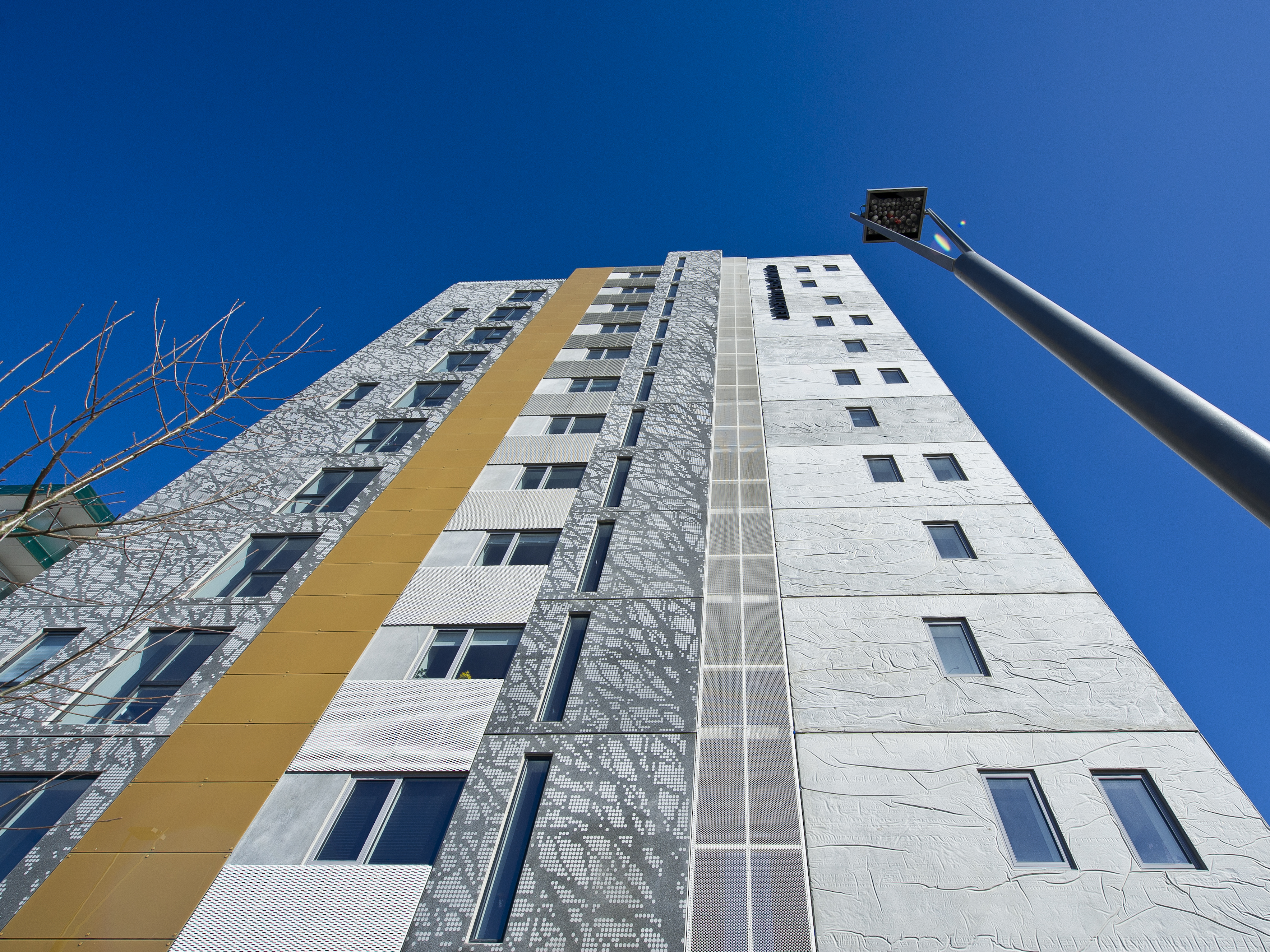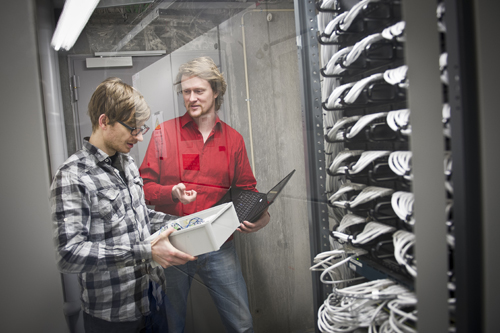Intelligent buildings make our energy consumption greener
It is possible to shift our energy consumption to times of the day when there is plenty of power from renewable sources such as solar and wind. At least to a certain extent if we invest in technology for intelligent management of our buildings. This is the conclusion of researchers in connection with the completion of one of the world’s most radical energy monitoring programmes.


Aarhus University researchers have now completed an historically large-scale trial of intelligent energy consumption control.
For a period of four years, they used a twelve-storey high-rise building at the Port of Aarhus as a living energy laboratory. Here they spent millions on integrating technological equipment that enabled them to log the energy consumption of 132 apartments round the clock at intervals of a few seconds.
“It’s the most thoroughly monitored building I know of, and we’ve had some unique experimental opportunities to carry out different kinds of interventions and study how we can increase the flexibility potential of both the building and the residents,” says Associate Professor Rune Hylsberg Jacobsen, Department of Engineering, Aarhus University.
3500 sensors monitor the building
Using a total of 3500 sensors mounted in different parts of the high-rise building, the researchers identified how a modern and highly efficient residential building can constantly adapt to supply and demand in the energy grid in the most appropriate way.
After four years of monitoring, however, they are unable to indicate any one single measure that can significantly shift the building’s energy consumption or change the behaviour of the residents. They nevertheless identified a complex interplay of minor adjustments that – combined – provide a significant potential for financial savings and a reduction of CO2 emission from the building.
“It appears that the combination of different interventions can shift the overall energy consumption. One part concerns regulating the building’s heating, pumping and ventilation systems. In principle, this takes place backstage by means of computer control. Another part deals with making the residents aware of when it is most appropriate to use energy,” says Associate Professor Jacobsen.
One aspect the researchers showed is that the building’s ventilation can be managed by remote control to create more air exchange in the apartments when power is cheap and green, and then reduce the ventilation during peak times, without compromising the comfort of the residents.
They also tried out different ways of involving the high-rise building’s residents. They developed a game, for example, where the residents could be rewarded with points for energy-responsible behaviour.
“We’d like the residents to take their showers at nine o’clock in the morning instead of eight o’clock, because this is when cheap green energy is available. Or we’ll get them to take the stairs in the afternoon when energy demand is at its peak, and take the elevator as much as they like at other times of the day when there’s a surplus of energy in the grid, or if it’s very windy and the wind turbines are hard at work,” says Associate Professor Jacobsen.
Out with savings logic of the past
The researchers collaborated with anthropologists throughout the entire project, and one of the main conclusions of the numerous experiments is that increasing the flexibility of the residents is difficult in terms of energy consumption.
“We’ve been brought up in our generation to save energy. Now we have to think to a greater extent about how we can be more flexible regarding when we use energy, and this is hard. If a young man is hungry and wants to toast some bread, it won’t help very much if we point out that it would be more appropriate to wait a while. As far as the individual is concerned, it only makes a very small difference,” says Associate Professor Jakobsen.
Actions at the individual level are nevertheless crucial as regards changing energy consumption in a greener direction. The vast majority of new buildings today are constructed according to standards that ensure a very high level of energy efficiency, so it therefore makes good sense to look to the people who live in the buildings for the potential for flexible energy consumption,” explains Associate Professor Jakobsen.
“If we want to influence energy consumption in energy-efficient buildings, there’s no point in looking at whether we can squeeze in an extra layer of insulation. On the contrary, we must focus on the part of energy consumption we can influence by getting the residents to change their habits without compromising their comfort. The major challenge here is to highlight their consumption and thereby help them to adopt behaviour that matches energy supply based on fluctuating energy sources,” says Associate Professor Jakobsen.
Intelligent buildings in the energy infrastructure of the future
The researchers largely succeeded in steering energy consumption in a greener direction in the high-rise building in Aarhus in relation to the supply of energy based on renewable energy sources. And even though this is not very much, it can have great significance at the aggregate level.
“A little is a lot in this context, where we can use intelligent systems to automate many of the processes that help ensure greener energy consumption. We’ve only looked at one single building’s flexibility potential, but if we were to take a thousand corresponding buildings, for example, we could achieve a significant shift in energy consumption,” says Associate Professor Jakobsen.
Intelligent management of a thousand buildings would correspond to a shift in energy consumption of approximately 2.2 megawatt hours per hour. About a third of this would come from flexibility in electricity consumption and the remainder would come from flexibility in district heating consumption.
The researchers will continue their work in the coming years by developing technology that can reduce our private energy consumption by boosting the flexibility of both buildings and people.
“The high-rise building provided us with an enormous amount of information about energy consumption. This means that we can now start working with models that predict what will happen at a specific point of time in certain weather conditions. This is extremely valuable in our work designing intelligent systems for buildings that can automatically respond to consumer demands in the most sustainable way,” says Associate Professor Jacobsen.
